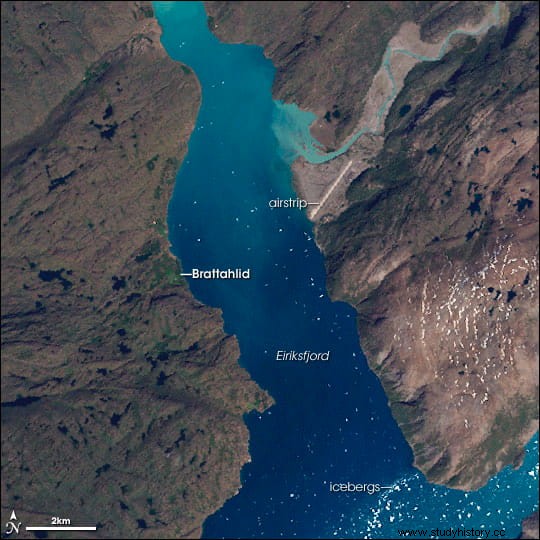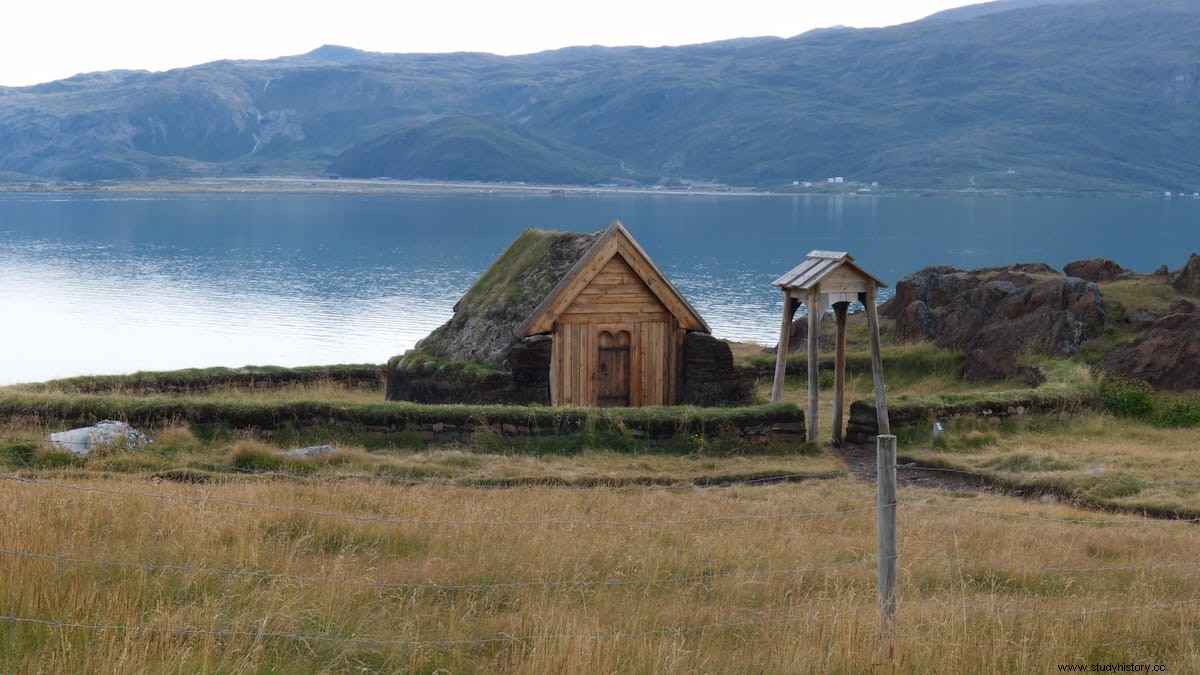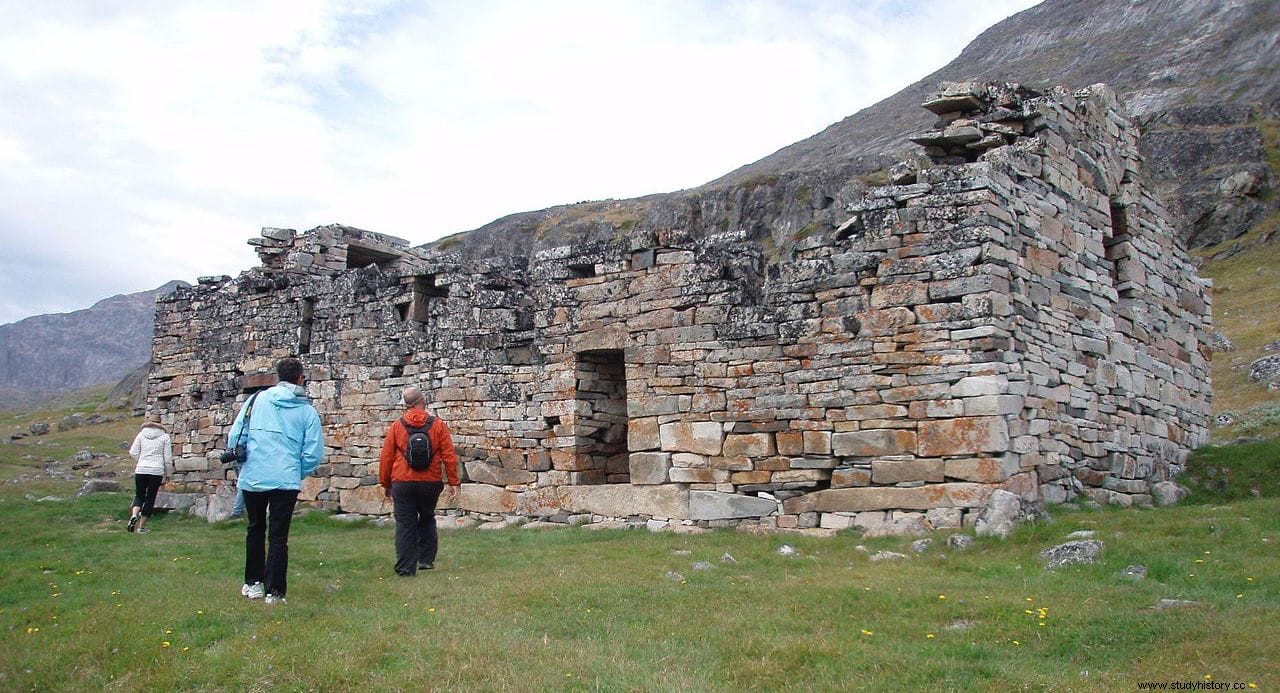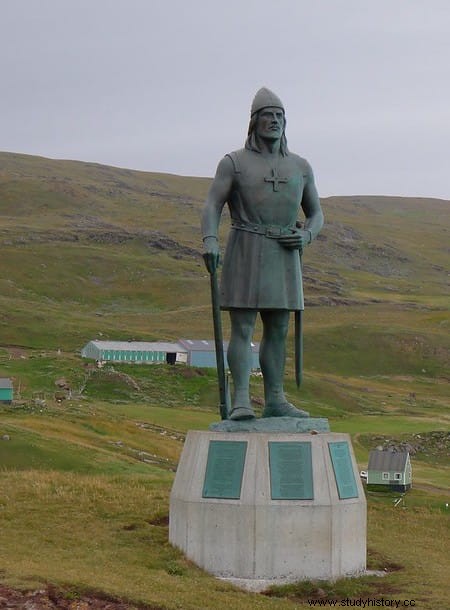When the Vikings arrived in Greenland in the year 985, they found a land almost completely covered by snow and ice. Except for a few clearings of vegetation, mainly in the extreme south, where they built their settlements.
One of them was the Qinngua valley, where the only natural forest in Greenland is found, all the others (if they existed) were cut down by settlers for wood, and those that exist today were created by man in recent times. .
The valley, which also has the warmest climate on the entire island, is located about 50 kilometers inland, next to Lake Tasersuag.

It is precisely next to the mouth of the lake that there are the remains of an old Nordic farm, the largest in the entire area, in the town now known as Qassiarsuk.
Some researchers believe that it is Brattahlíð, Erik the Red's own farm, located at the bottom of the Eiriksfjörd fjord (today called Tunulliarfik) and about 96 kilometers from the south coast.
It's one of 500 farms that the Eastern Settlement once had, and of course Erik kept the best land for himself.
Founded in the year 985, it was the place of residence of him and his family, from where he controlled the rest of the Norse settlements. Curiously, it seems that the Norse in Greenland were dedicated to livestock instead of fishing, subsisting mainly on the milk of sheep and goats, caribou and seals.

Although some farm buildings, stone walls up to a meter and a half thick covered by a layer of earth and grass as insulation, were still visible in 1953, today there are only a few holes in the ground where they were embedded.
It is estimated that the main building had measures of 54 by 14 meters. The remains that can be seen today are from later medieval buildings.

There in Brattahlíð it is known that the first church in Greenland was built in wood, the Þjóðhildarkirkja, named after Þjóðhildur, the wife of Erik who had converted to Christianity (if we consider Greenland as part of the American continent, it would be the first church built by Europeans in America).
Another stone one was built on it in the 14th century, and in its surroundings there are several tombs and tombstones with runic inscriptions that delimit the old outline of the church.
The Vikings were in Greenland for 500 years, until the colony became extinct sometime in the 15th century. The last historical record of their presence is dated September 16, 1406, detailing the marriage of Icelanders Thorsteinn Olafsson and Sigridr Bjornsdóttir at Hvalsey Church, the ruins of which are still visible today.

After that there is no more evidence until 1723, when Hans Egede explored the settlements and found them already in ruins.
The causes of the abandonment of the settlements could have been several:from the Little Ice Age that lowered temperatures throughout Greenland, reducing hay production, through the possible deforestation and reduction of grazing areas, to the arrival of the Inuit of the Thule culture, who entered Greenland from the year 1100 and spread south.

At the same time, the increasing number of icebergs and sea ice along the coast made sea travel and receiving supplies from Iceland almost impossible. The last ship to return to Europe from Greenland is known to have arrived in Norway in 1410.
As for Erik the Red, he died on his farm in 1003, from the epidemic brought by a consignment of new settlers the year before, which ravaged the entire area. One of his sons, Leif Eriksson (already converted to Christianity) would be the first European to explore the lands of Vinland, in Newfoundland and Canadian Labrador around 1002.
Today Brattahlíð still offers the best arable land on the island, thanks to its location, which protects it from cold northerly winds and ocean storms.
